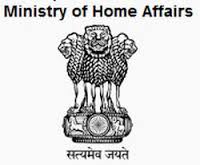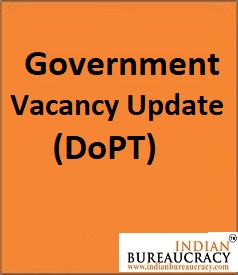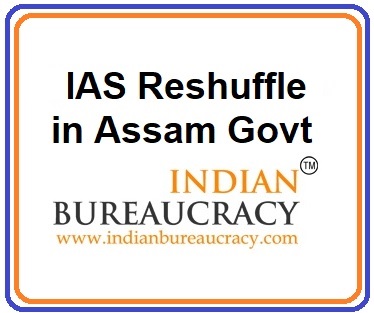In the Union Budget 2015-16, the Finance Minister Shri Arun Jaitley had announced that the PPP mode of infrastructure development has to be revisited and revitalised. In pursuance of this announcement, a Committee on Revisiting & Revitalising the PPP model of Infrastructure Development was set-up which was chaired by Dr. Vijay Kelkar. The Report of the Committee submitted to the Government has been uploaded on the Ministry of Finance’s website.
The Executive Summary of the Report is as follows:
Highlights of the Report
1.Public Private Partnerships (PPPs) in infrastructure refer to the provision of a public asset and service by a private partner who has been conceded the right (the “Concession”) for the purpose, for a specified period of time, on the basis of market determined revenue streams, that allow for commercial return on investment.
- PPPs in infrastructure represent a valuable instrument to speed up infrastructure development in India. This speeding up is urgently required for India to grow rapidly and generate a demographic dividend for itself and also to tap into the large pool of pension and institutional funds from aging populations in the developed countries.
- India offers today the world’s largest market for PPPs. It has accumulated a wealth of experience in getting to this premiere position. As the PPP market in infrastructure matures in India, new challenges and opportunities have emerged and will continue to emerge. Periodic review of PPPs, as in the present Committee’s remit, are a must to help address issues before they become endemic and to mainstream innovations and foster new ones that improve the successful delivery of PPP projects.
- India’s success in deploying PPPs as an important instrument for creating infrastructure in India will depend on a change in attitude and in the mind-set of all authorities dealing with PPPs, including public agencies partnering with the private sector, government departments supervising PPPs, and auditing and legislative institutions providing oversight of PPP’s.
- The Government may take early action to amend the Prevention of Corruption Act, 1988 which does not distinguish between genuine errors in decision-making and acts Report of the Committee on Revisiting and Revitalising the PPP Model of Infrastructure. Measures may be taken immediately to make only malafide action by public servants punishable, and not errors, and to guard against witch hunt against government officers and bureaucrats for decisions taken with bonafide intention. The government may speed up amendment of the Prevention of Corruption Act, Vigilance and Conduct rules applicable to government officers.
- Experience has also underlined the need to further strengthen the three key pillars of PPP frameworks namely Governance, Institutions and Capacity, to build on the established foundation for the next wave of implementation.
- In addition to changing mind-sets, there is an urgent need to rebuild India’s PPP capacities. Structured capacity building programmes for different stakeholders including implementing agencies and customized programmes for banks and financial institutions and private sector need to be evolved. The need for a national level institution to support institutional capacity building activities must be explored. Every stakeholder without exception has strongly emphasised the urgent need for a dedicated institute for PPPs as was announced in the previous Budget. The Committee strongly endorses the “3PI” which can, in addition to functioning as a centre of excellence in PPPs, enable research, review, roll out activities to build capacity, and support more nuanced and sophisticated models of contracting and dispute redressal mechanisms (Chapter 6, paragraph 6.1.4). A dynamic 3PI can support a dynamic process of infrastructure design, build, and operate in India and thereby help deliver on the promise of reliable infrastructure services for all citizens.
- The Committee cannot overstate the criticality of setting up of independent regulators in sectors that are going in for PPPs. The Committee recommends setting up these independent regulators with a unified mandate that encompasses activities in different infrastructure sub sectors to ensure harmonized performance by the regulators (Chapter 6, paragraph 6.1.8).
- The Committee welcomes the current review and amendment of the Arbitration Act, and strongly endorses the need for time limits on hearings.
- The dominant, primary concern of the Committee was the optimal allocation of risks across PPP stakeholders. Inefficient and inequitable allocation of risk in PPPs can be a major factor in PPP failures, ultimately hurting the citizens of India. The Committee notes that the adoption of the Model Concession Agreement (MCA) has meant that project specific risks are rarely addressed by project implementation authorities in this “One-size-fits- all” approach. A rational allocation of risks can only be undertaken in sector and project-specific contexts.
.
- For the next generation of PPP Contracts, the Committee suggests the following broad guidelines while allocating and managing risks: 1) an entity should bear the risk that is in its normal course of its business; 2) an assessment needs to be carried out regarding the relative ease and efficiency of managing the risk by the entity concerned; 3) the cost effectiveness of managing the risk needs to be evaluated; 4) any overriding considerations/stipulations of a particular entity need to be factored in prior to implementing the risk management structure.
5) DEA, or preferably the 3PI, should deploy sophisticated modeling techniques that exist to assess risk probabilities and the need to provision for them; and (6) there should be ex-ante provisioning for a renegotiation framework in the bid document itself (Chapter 4, paragraph 4.1.6).
- Typically infrastructure PPP projects span over 20-30 years and a developer often loses bargaining power related to tariffs and other matters in case there are abrupt changes in the economic or policy environment which are beyond his control. The Committee feels strongly that the private sector must be protected against what have been called “Obsolescing Bargain”-the loss of bargaining power over time by private player in PPPs-through the four mechanisms discussed in Chapter 4 including the setting up of Independent Sector Regulators.
- PPP projects can become distressed when risks emerge that may not have been contemplated at the time of signing. This could give rise to a call for amending the terms of the Concession Agreement to reflect new project realities better (Chapter 4, paragraph 4.3.2). The Committee has suggested benchmarks in Chapter 4 to be applied to each proposed renegotiation as well as set out a set of conditions that should not be accepted as valid reasons for a request for amendment of a concession agreement (Chapter 4, paragraphs 4.3.6 and 4.3.7).
- The final decision on a renegotiated concession agreement must be based on 1) full disclosure of the renegotiated estimated long-term costs, risks and potential benefits; 2) comparison with the financial position for government at the time of signing the concession agreement; and 3) comparison with the existing financial position for government just prior to renegotiation. This will permit the authority regulating the Report of the Committee on Revisiting and Revitalising the PPP Model of Infrastructure xi concession to take a decision based on a full comparison of the likely outcomes over the future of the concession (Chapter 4, paragraphs 4.3.8 and 4.3.9).
- The Committee notes that there a number of stalled PPP projects need to be kick started. There is an urgent need to evolve a suitable mechanism that evaluates and addresses “actionable stress”-using stress and adversity to deal with the underlying systemic problems (Chapter 5, paragraph 5.3.3). Sector specific institutional frameworks should be developed to address these stalled infrastructure projects. The proposed Tribunal and IPAT approach, in the Committee’s view are the possible solution (Chapter 5, paragraphs 5.3.15 and 5.3.16). The Committee is of the view that only a statutorily established credible empowered multi-disciplinary expert institutional mechanism may be able to deal with the complex issues involved (Chapter 5, paragraph 5.3.4).
- The Committee recognizes the need for a quick, equitable, efficient and enforceable dispute resolution mechanism for PPP projects. It is suggested that PPP contracts have clearly articulated dispute resolution structures that demonstrate commitment of all stakeholders and provide flexibility to restructure within the commercial and financial boundaries of the project, (Chapter 8, paragraph 8.2.1).
- In the wake of new project proposals emerging in various infrastructure sectors, the Committee recommends that appropriate legal frameworks be developed against which these can be evaluated (Chapter 6, paragraph 6.2.1).
- The authorities may be advised against adopting PPP structures for very small projects, since the benefits of delivering small PPP projects may not be commensurate with the resulting costs and the complexity of managing such partnerships over a long period. The transaction costs of well-structured PPP projects are significant, including essential but expensive expert advisory services (Chapter 6, paragraph 6.2.6).
- Unsolicited Proposals (“Swiss Challenge”) may be actively discouraged as they bring information asymmetries into the procurement process and result in lack of transparency and fair and equal treatment of potential bidders in the procurement process (Chapter 6, paragraph 6.2.7).
- Inherent in the concept of PPP is the role of a “Private Sector Partner” that will implement the project, based on the need to leverage private sector financing and also the managerial and operational efficiencies of the private sector party. It is in this context that the Committee is of the view that since state owned entities SoEs/PSUs are essentially Government entities and work within the government framework, they should not be allowed to bid for PPP projects.
- The authorities should not treat PPPs as an off-balance sheet funding method for the government’s responsibility of providing reliable infrastructure services to its citizens. PPPs should not be used as the first delivery mechanism without checking its suitability for a particular project. States and other agencies should also not treat Central PPP VGF as a source of additional grants that can be accessed by adopting a PPP delivery mode for projects that are not suitable for such a long-term financing structure (Chapter 6, paragraph 6.2.8).
- There have been concerns raised by all stakeholders (Government and Private Sector alike) on the demand for developer books of account being subjected to government audit and for access under RTI and Article 12 of Constitution. Conventional audit by authority of private partner’s books as per standard procurement process risks delivery of poor quality of service/ public asset provision if there is no certainty of processes in the medium term. To address this, the Committee recommends that the government notify comprehensive guidelines on the applicability and scope of such activities. The laid down process would enable review only of government internal systems, and not that of SPVs but SPVs would need to follow best practice in corporate governance systems including those related to related party transactions, financial disclosures etc as in the Companies Act, 2013.
- Monetisation of viable projects that have stable revenue flows after EPC delivery may be considered. This should be seen as a monetisation opportunity that can attract risk averse long-term funding like pension and institutional investors. By providing O&M PPP opportunities, the authority will be able to free up budgetary funds for fresh EPC and start a virtuous cycle of fresh investment fed by additional revenues (Chapter 7, paragraph 7.1.8).
- Equity in completed, successful infrastructure projects may be divested by offering to long-term investors, including overseas institutional investors as domestic and foreign institutional investors with long-term liabilities are best suited for providing such long-term financing, but have a limited appetite for risk. Cash generated out of divestment of equity would be available for the creation of new infrastructure projects in the country
- Improving a PPP project’s risk profile so that it is more suitable for overseas and domestic long-term investors can be accomplished through partial recourse to credible third-party institutions. This could be implemented through a partial credit guarantee or cash flow support mechanisms (Chapter 6, paragraph 6.2.12).
- It is necessary to explore options for sourcing long term capital at low cost. Towards this, the Committee recommends, encouraging the banks and financial institution to issue Deep Discount Bonds or Zero Coupon Bonds (ZCB) (Chapter 7, paragraph 7.1.15). These will not only lower debt servicing costs in an initial phase of project but also enable the authorities to charge lower user charges in initial years.
- Some countries have a legal framework for PPPs in the form of PPP Act/Law/Policy. MoF may develop and publish a national PPP Policy document. Ideally, such a policy Report of the Committee on Revisiting and Revitalising the PPP Model of Infrastructure xiii document should be endorsed by the Parliament as a policy resolution to impart an authoritative framework to implementing executive agencies as well as to legislative and regulatory agencies charged with oversight responsibilities (Chapter 6, paragraph 6.2.2). The Committee recommends an assessment of whether formulating and enacting a PPP Law will facilitate successful expansion of PPP into new sectors, including health, other social sectors, and urban transport (Chapter 10, paragraph 10.1.1).
- In the final analysis, the success of deploying PPP as an additional policy instrument for creating infrastructure in India will depend on the change in attitudes and mindsets of all the authorities including public agencies partnering the private sector, government departments supervising the PPPs, and auditing and legislative institutions providing oversight of the PPPs. The PPP reflects a paradigm shift involving the private sector. It means moving away from “transaction to relationship,” accommodating “give and take” between private and public sector partners, and finally accepting uncertainties and appropriate adjustments inherent in implementing long-time contracts. The Committee urges all parties concerned to foster trust between the private sector and public sector partners in implementing PPP. As mentioned earlier in the report, PPP is an additional policy instrument to enable India to save time. Since the “demographic dead-lines” are staring at us, there is need to accelerate growth. By all accounts, there are only two or three decades left for India to complete the transition from a low-income country to a high-income and developed economy by overcoming the “middle income trap” (Chapter 10, paragraph 10.2.1). a. Contracts need to focus more on service delivery instead of fiscal benefits (Paragraph 2.5.5, viii). b. Better identification and allocation of risks between stakeholders (Paragraph 2.5.5, viii). c. Prudent utilization of viability gap funds where user charges cannot guarantee a robust revenue stream (Paragraph 2.5.5, viii). d. Improved fiscal reporting practices and careful monitoring of performance (Paragraph 2.5.5, viii). a. Given the urgency of India’s demographic transition, and the experience India has already gathered in managing PPPs, the government must move the PPP model to the next level of maturity and sophistication (Paragraph 3.1.7).
- KEY RECOMMENDATIONS
- Revisiting PPPs: Achievements and Challenges
- Contracts need to focus more on service delivery instead of fiscal benefits
- Better identification and allocation of risks between stakeholders
- Prudent utilization of viability gap funds where user charges cannot guarantee a robust revenue stream .
- Improved fiscal reporting practices and careful monitoring of performance a. Given the urgency of India’s demographic transition, and the experience India has already gathered in managing PPPs, the government must move the PPP model to the next level of maturity and sophistication.
- Why it is Urgent for India to get Infrastructure PPPs.
a.Given the urgency of India’s demographic transition, and the experience India has already gathered in managing PPPs, the government must move the PPP model to the next level of maturity and sophistication (Paragraph 3.1.7).
- The Committee feels strongly that maturing the PPP model in India is an urgent priority also to take advantage of this historical conjunction of India’s infrastructure needs and the availability of long-term funding
- PPPs have the potential to deliver infrastructure projects both faster and better. Building on India’s 15 years of experience with PPPs, there is need to iron out the difficulties in the performance of PPP at every stage of the contract (Paragraph 3.5.2).
- Re-balancing of risk Sharing :
- An assessment needs to be carried out regarding the relative ease and efficiency of managing the risks by the entity concerned (Paragraph 4.1.6).
- Cost effectiveness of managing the risk needs to be evaluated (Paragraph 4.1.6).
- Sophisticated modelling techniques are prevalent to assess probabilities of risks and the need to provision for them. DEA may hone its skills in this and provide guidance to project authorities (Paragraph 4.1.6).
- The final decision for a renegotiated Concession Agreement must be based on (Paragraph 4.3.8):
– Full disclosure of long-term costs, risks and potential benefits;
– Comparison with the financial position for government at the time of signing the Concession Agreement;
– Comparison with the financial position for government at the time prior to renegotiation.
- Resolving Legacy Issues
- Only a statutorily established credible empowered multi-disciplinary expert institutional mechanism can deal with the complex issues involved (Paragraph 5.3.4):
– An Infrastructure PPP Project Review Committee (“IPRC”) may be constituted to evaluate and send its recommendations in a time-bound manner upon a reference being made of “Actionable Stress” in any Infrastructure Project developed in PPP mode beyond a notified threshold value.
– An Infrastructure PPP Adjudication Tribunal (“IPAT”) chaired by a Judicial Member (former Judge SC/Chief Justice HC) with a Technical and/or a Financial member, where benches will be constituted by the Chairperson as per needs of the matter in question
- In case procurement of land or clearance is pending from government authorities for more than prescribed number of days, the outstanding work should be descoped (under the provisions of Change in Law of Concession Agreement), and allow rest of activities for completed work. Balance work could be completed on a cash-contract basis, provided land and required clearances are in place (Box 6).
- Cancel projects that have not achieved a prescribed percentage of progress on the ground. Rebid them once issues have been resolved or complete them through public funds and if viable, bid out for Operations and Maintenance (Box 6).
- Generic, Including Legacy Projects
- Sector specific institutional frameworks may be developed to address issues for PPP infrastructure projects (Chapter 5, paragraph 5.3.15). An entity should bear the risk that is in its normal course of its business (for instance, acquisition of land is a normal course of business for public entities).Overriding considerations/ stipulations of each entity to be factored in prior to implementation of risk management structure (Chapter 4, paragraph 4.1.6).
- Learnings from the Highways sector to be utilized for other sectors to customize and adopt such frameworks (Chapter 5, paragraph 5.3.15).
- Umbrella guidelines may be developed for stressed projects that provide an overall framework for development and functioning of the sector specific frameworks (Chapter 5, paragraph 5.3.16).
- DEA to finalize a national PPP Policy document (Chapter 6, paragraph 6.2.2).
- Unsolicited Proposals (“Swiss Challenge”) to be discouraged to avoid information asymmetries and lack of transparency (Chapter 6, paragraph 6.2.7).
- PPP structures not to be adopted for very small projects in view of the transaction costs involved. DEA to issue a threshold guidance (Chapter 6, paragraph 6.2.6).
- Chapter 6- Strengthening Policy, Governance and Institutional Capacity
- Amend the Prevention of Corruption Act, 1988 to distinguish between genuine errors in decision-making and acts of corruption (Paragraph 6.1.6).
- Build up capacity in all stakeholders, including regulators, authority, consultants, financing agencies, developers (Paragraph 6.1.2).
- Set up an institution for invigorating private investments in infrastructure, providing guidance for a national PPP policy and developments in PPP, developing a mechanism to capture and collate data for decision making, undertaking capacity building activities. The 3P-I institute for PPPs announced in 2014 may be set-up without delay (Paragraph 6.1.4).
- Pre-qualified PPP consultancies could be empanelled by DEA as earlier which could be tapped at short notice (Paragraph 6.4.3).
- Revive the PPP Cells supported by the DEA over the last decade in Infrastructure Ministries and State Governments (Paragraph 6.1.5).
- An institutionalized mechanism like the National Facilitation Committee (NFC) to ensure time bound resolution of issues including getting timely clearances/approvals during implementation of projects for smooth running of such projects (Paragraph 6.2.5).
- Ministry of Finance to coordinate with other implementing ministries may develop a policy to promote secondary market for operational assets (Paragraph 6.1.9).
- Disallow statutory audit to books of SPVs governed by the provisions of the Companies Act. Ensure adoption of principles of good governance by the SPVs (Paragraph 6.2.3). 5) Generic, Including Legacy Projects 6. Chapter 6- Strengthening Policy, Governance and Institutional Capacity Report of the Committee on Revisiting and Revitalising the PPP Model of Infrastructure xvi
- Standard public authority requirements of audit till point of award (public books) and post-construction discharge by Authority of monitoring and oversight of project operations as per the concession agreement (public books) to be in the purview of statutory/government audit agencies (Paragraph 6.2.3).
- Essential to set up independent Regulators in sectors going in for PPP (Paragraph 6.1.8).
- Discourage government participation in SPVs that implement PPP projects unless strategically essential.
- Scaling- Up Finance
- Restrict the number of banks in a consortium (Paragraph 7.2.3).
- Banks to build up their own risk assessment/appraisal capabilities (Paragraph 7.2.3).
- Check list of items listed as a guidance for lenders.
- RBI may provide guidelines to lenders on encashment of bank guarantees in line with ICC norms (Paragraph 7.1.3).
- Monetisation of viable projects that have stable revenue flows after EPC delivery should be considered (Paragraph 7.1.8).
- Equity in completed, successful infrastructure projects may be divested by offering to long-term investors.
- Ministry of Finance to allow banks and financial institutions to issue Zero Coupon Bonds which will also help to achieve soft landing for user charges in infrastructure sector (Paragraph 7.1.5).
- Revitalising Contractual Processes
- a) Need for review of the MCAs (Paragraph 8.1.1).
- b) Sample suggestions for generic changes, including for resolution of disputes, and sector-specific changes (Paragraph 8.1.4 and 8.2.1)
- Reinvigorating the Sectors:
- Independent sector regulators essential (Paragraph 9.2.5).
- Build upon maturing landscape in Roads and Ports PPP and move into the next phase: Roads: avoiding delays, institutionalized dispute resolution, improved project development activity, monetization of operational assets, efficiency and transparency by electronic tolling, etc (Paragraph 9.3.6).
- Ports: review of role and need of Tariff Authority for Major Ports (TAMP), review of MCA, quicker clearances, rationalized leases and stamp duties (Paragraphs 9.3.1-9.3.5).
- Airport: PPPs to be encouraged where viable in Greenfield and brownfield projects, have policy that addresses potential demand for airport services in the country, notify a unified regulatory structure, clarity in delineation of Till policy,
- Encourage use of PPPs in sectors like Railways, Urban, etc. Railways to have an independent tariff regulator, tap potentially useful PPP opportunities including brownfield assets (Paragraph 9.5.1-9.5.4).
10 .Fast Forward PPPs
- Set up an institute of excellence in PPP to inter alia guide the sector, provide policy input, timely advice and undertake sustainable capacity building (Paragraph 10.1.3).
- Ensure integrated development of infrastructure with roadmaps for delivery of projects (Paragraph 10.1.5).
- India’s demographic deadlines are staring at us. There are only two or three decades left to complete the transition from a country that has just attained middle-income status to that of a high-income and developed economy. Besides the basic problems for provision of adequate infrastructure, the middle-income trap is also to be averted. Without adequate infrastructure, this will simply not be possible. India is currently in a global win-win situation with a large young population that will need good jobs and a huge pool of global savings that can be tapped for building out our infrastructure. PPPs are an important policy instrument that will enable India to compress time in this journey towards economic growth and development. A successful and growing stream of PPPs in infrastructure will go a long way in accelerating the country’s development process (Paragraph 10.2.1)





